By Michael Perlman
mperlman@queensledger.com
Most recently at the Church-in-the-Gardens Community House, local residents among scholars celebrated the 200th birthday of Frederick Law Olmsted Sr., “the father of American landscape architecture.” His other titles are social critic, journalist, and public administrator. Guests gave a champagne toast to Olmsted’s legacy and enjoyed a cake bearing his photo. This event was coordinated by the Forest Hills Gardens Foundation, and furthermore, Olmsted’s anniversary is being celebrated in parks and communities countrywide.
 Olmsted was born on April 26, 1822, in Hartford, Ct., and passed away on August 28, 1903, in Belmont, MA. Among his most significant accomplishments are the landscapes of Central Park, Riverside Park and Drive, Prospect Park, Bayard Cutting Arboretum in Long Island, Ocean Parkway and Eastern Parkway, Morningside Park, Downing Park in Newburgh, the U.S. Capitol, the 1893 World’s Columbian Exposition in Chicago, Boston’s Emerald Necklace, and the Biltmore Estate in North Carolina. His son, landscape architect Frederick Law Olmsted, Jr, designed Forest Hills Gardens, along with principal architect Grosvenor Atterbury.
Olmsted was born on April 26, 1822, in Hartford, Ct., and passed away on August 28, 1903, in Belmont, MA. Among his most significant accomplishments are the landscapes of Central Park, Riverside Park and Drive, Prospect Park, Bayard Cutting Arboretum in Long Island, Ocean Parkway and Eastern Parkway, Morningside Park, Downing Park in Newburgh, the U.S. Capitol, the 1893 World’s Columbian Exposition in Chicago, Boston’s Emerald Necklace, and the Biltmore Estate in North Carolina. His son, landscape architect Frederick Law Olmsted, Jr, designed Forest Hills Gardens, along with principal architect Grosvenor Atterbury.
“Frederick Law Olmsted was a Renaissance man,” Justin Martin, a Forest Hills Gardens resident and author of “Genius of Place: The Life of Frederick Law Olmsted,” a definitive biography, said. He delivered a slideshow presentation and engaged his audience of over 50 attendees with his encyclopedic style approach.
Martin explained an early experience that would shape Olmsted’s achievements. “When he was growing up in Hartford, his family was in the habit of taking horseback excursions into the countryside. He would sit up in front with his father on a saddle. For hours on end, his family would travel through the countryside, in silent contemplation of nature.”
When Olmsted was 14, he dropped out of school and began seeking a profession. A solid one was being a surveyor, but he did not take it seriously. Martin explained, “pretending to learn the profession, he was in the habit of sneaking off, going hiking, and wandering around in the woods.” Then his father decided that it was time for his son to settle down. Martin continued, “he arranged for him to move to NYC and get a job at a milkshake firm, but he hated the 9-to-5 hours.”
Olmsted also explored farming. “It made sense, since 70 percent of the population in this era was involved in agriculture. He bounced around from state to state and farm to farm, before encountering a very attractive situation in Staten Island,” Martin said.
 That is the site of Olmsted’s farmhouse at 4515 Hylan Boulevard and farm, which was home from 1848 to 1855. Tosomock Farm is where he began experimenting with landscaping and agricultural techniques, resulting in improvements that influenced his later countrywide designs. Today this rare survivor is listed on the National Register of Historic Places and is awaiting significant restoration. Martin serves on the board of an organization committed to restoring it. He said, “we are also hoping to open it as a museum dedicated to agriculture and its most famous resident.”
That is the site of Olmsted’s farmhouse at 4515 Hylan Boulevard and farm, which was home from 1848 to 1855. Tosomock Farm is where he began experimenting with landscaping and agricultural techniques, resulting in improvements that influenced his later countrywide designs. Today this rare survivor is listed on the National Register of Historic Places and is awaiting significant restoration. Martin serves on the board of an organization committed to restoring it. He said, “we are also hoping to open it as a museum dedicated to agriculture and its most famous resident.”
Olmsted pointed out that England was in the seat of scientific farming, and he could learn some agricultural best practices that he could bring home to Staten Island. His father always had a soft spot for farming. Back at Tosomock Farm, he encountered George Putnam, who later published “Walks and Talks of an American Farmer,” Olmsted’s book, which chronicles his England walking tour.
In autumn 1852, Olmsted as a farmer, set off to the south, spoke everywhere, and produced a superb series of dispatches that placed the new New York Times on the map. Martin said, “He recently visited model farms of England and had his own operation in Staten Island and paid people to work for him, in contrast to slavery. He found the south to be an image of surpassing natural beauty.” After leaving Staten Island, he relocated to Manhattan and acquired a position as an editor and writer for Putnam’s Monthly.
After the Crash of 1857, he was jobless. He continued, “Olmsted was forced to take a modest job, where he was to drain swamps on a scruffy piece of land, very prosaically named for its position in the middle of NYC, called Central Park. He was to clear this piece of land for someone else’s design.” The original plan for Central Park dates to 1858. The amateurish design was eventually scrapped.
Olmsted would team up with his senior partner, landscape architect Calvert Vaux, who explained that in his native country of England if one wishes to have the best design, hold a public competition. “There were 33 contestants, and 32 rated somewhere between a B minus and a flat F, but the Olmsted and Vaux design received an A+,” Martin explained. It was a massive undertaking. “As each section would open to the public, people from various backgrounds were mixing and mingling in the park,” Martin said. In Olmsted’s generation, people came of age in the 1840s and were very committed to social justice. As for landscape architecture, Olmsted finally found a worthy means of addressing a generational mandate via social justice, and he described Central Park as “A democratic development of the highest significance.”
During the Civil War, Olmsted made his way to Washington D.C. and headed the U.S. Sanitary Commission, a predecessor to the American Red Cross. “This organization supplied immeasurable aid to wounded soldiers,” said Martin. He oversaw the creation and operation of field hospitals and medical boats and established quarantine procedures.
 When the Civil War ended in 1865, communities countrywide began clamoring for parks to be built. He explained, “Communities wanted their ‘Central Park.’ It was like a dam bursting. The natural team to turn to was Olmsted & Vaux, and they produced a series of masterpieces across the country. Their sophomore initiative was Prospect Park.”
When the Civil War ended in 1865, communities countrywide began clamoring for parks to be built. He explained, “Communities wanted their ‘Central Park.’ It was like a dam bursting. The natural team to turn to was Olmsted & Vaux, and they produced a series of masterpieces across the country. Their sophomore initiative was Prospect Park.”
Olmsted, with his stepson John Charles working in the firm, designed masterpieces including a park system for Boston known as the Emerald Necklace, Cherokee Park in KY, and the grounds for the Chicago World’s Fair. In 1895, Olmsted’s final major commission was the Biltmore Estate. “The client was George Washington Vanderbilt II, the wealthiest person on earth,” said Martin. That was when his son, Frederick Law Olmsted, Jr. collaborated on this project, serving as an apprenticeship. “He urged him to review and train yourself, and if you don’t get it now, you never will,” continued Martin.
A few years later, Olmsted passed away, and sons John Charles and Flo, Jr. stepped into a ready-made profession. They coined a landscape architecture firm, the Olmsted Brothers, and followed in their father’s footsteps by designing 20th-century countrywide masterpieces encompassing parks and private estates. Flo, Jr. became the firm’s public face. Martin said, “They refined and refurbished their father’s parks. Parks are like living artwork that are never really completed.” With the advent of automobiles, they repurposed horse-drawn carriage roads. They also focused on new areas that were unexplored by their father, such as corporate campuses.
Whereas Olmsted Sr. produced a manifesto calling for a national park service, Flo, Jr. helped shape its mission statement. His excerpt read, “Promoting public recreation and public interest through the use and enjoyment by the people of natural scenery and objects of interest.” Flo, Jr. was involved in the design of national parks including Acadia, The Everglades, and the Great Smoky Mountains, which included creating pathways to scenic overlooks and enabling hiking. Martin said, “The Olmsted Brothers was much more involved with urban planning for cities and their future direction. Flo, Jr. would draw up plans for Utica, Detroit, Rochester, and New Haven, and famously be involved in the McMillan Commission, which was an effort to beautify public spaces in Washington, D.C., known as the National Mall.”
In 1908, the Russell Sage Foundation embarked upon its first major project to create a model community in Queens, it was natural to turn to Flo, Jr. Martin said, “For the Forest Hills Gardens, he would closely apply his father’s design principles, such as intense attention to detail and a real commitment to nature and democratic spaces.”
Martin explained, “As you travel through our neighborhood, bear in mind that with Olmsted and his grand 19th-century designs, you can draw a direct line to Forest Hills Gardens, designed by his son.” Bruce Eaton, Forest Hills Gardens Foundation president, presented a Forest Hills Gardens video drawing the eye on outstanding characteristics and featured vintage and recent photos of the earliest planned English garden community. He pinpointed a lasting impact of the Olmsted’s, such as curved streets and shared green spaces. He also cited Martin’s article for “Cottage Living” in 2007, where he explained, “While Flo designed Central Park for a much larger geography, Flo, Jr. incorporated small parks into the Gardens. He believed that the larger the park, the more likely that visitors would not connect and move about behind a veil of urban anonymity.”
Some communal spaces are Station Square, the Tea Garden, Greenway Terrace and Flagpole Green, Olivia Park, and Hawthorne Park. The clip also featured the irregularity of intersections, so visitors will not know what to anticipate. In some cases, homes do not face a main artery. Curved streets with Tudor and Arts & Crafts homes, appealing vistas, and diverse monumental trees and plants are everlasting trademarks that reflect the Olmsteds’ legacy.
To contribute to the archives, contact foresthillsgardensfoundation@gmail.com




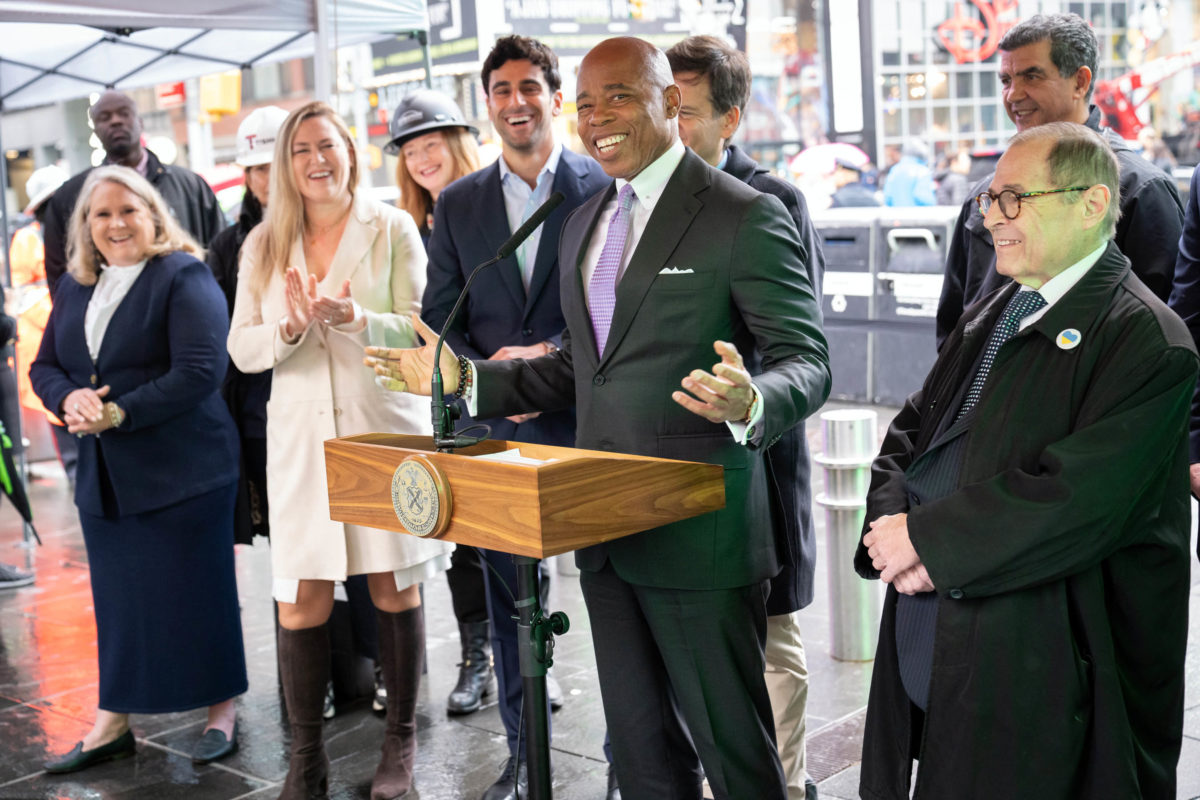
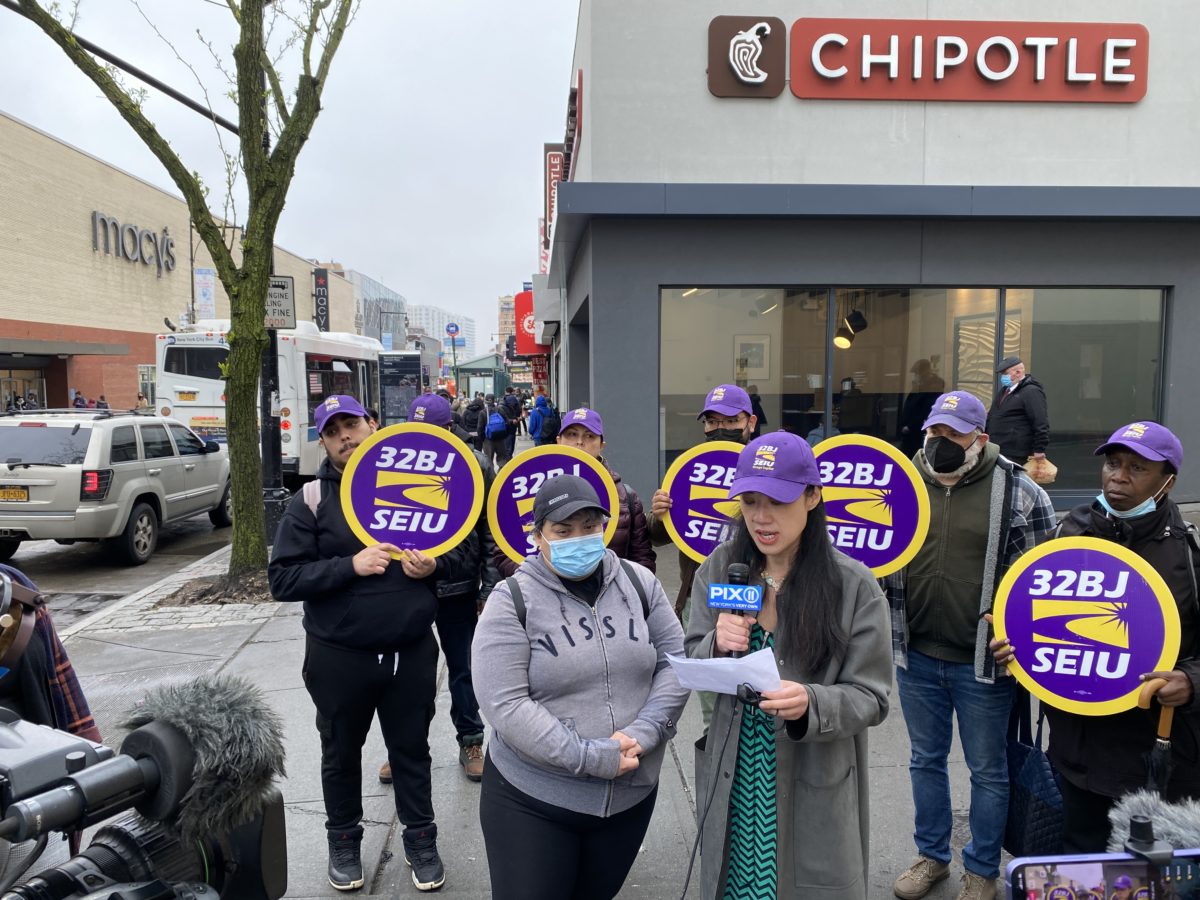
 The Flushing resident and single mother of one says she was fired after she called in sick, despite having three sick days to use. In response, Service Employees International Union Local 32BJ filed charges under the National Labor Relations Act, accusing Chipotle of firing her for union activity.
The Flushing resident and single mother of one says she was fired after she called in sick, despite having three sick days to use. In response, Service Employees International Union Local 32BJ filed charges under the National Labor Relations Act, accusing Chipotle of firing her for union activity.
 “My biggest goal was to be an art director for a major magazine,” she says, adding that she stayed in Des Moines to take a job with the media conglomerate Meredith Corp.
“My biggest goal was to be an art director for a major magazine,” she says, adding that she stayed in Des Moines to take a job with the media conglomerate Meredith Corp. There are shiny silver scoops and funnels for the dry goods.
There are shiny silver scoops and funnels for the dry goods.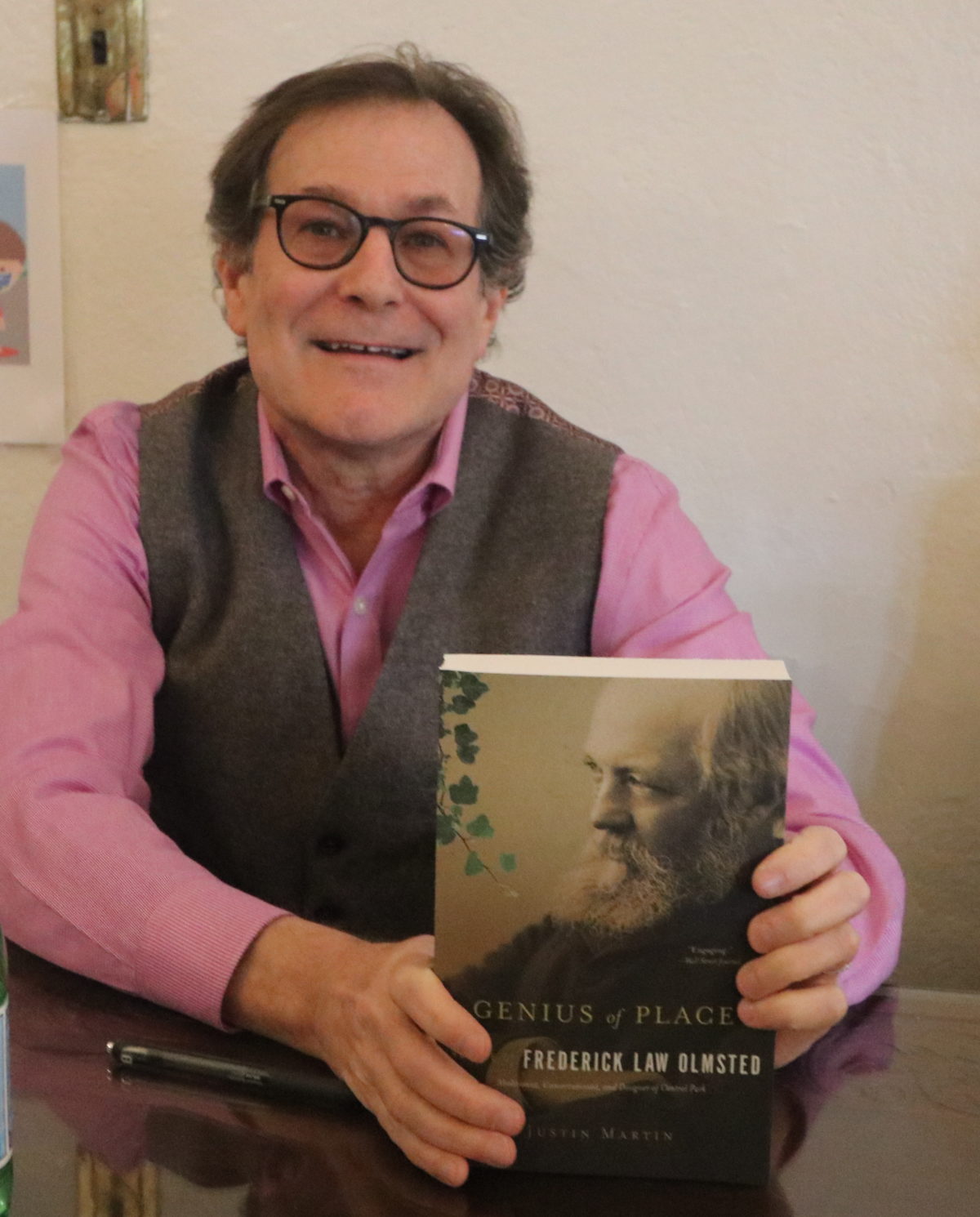
 Olmsted was born on April 26, 1822, in Hartford, Ct., and passed away on August 28, 1903, in Belmont, MA. Among his most significant accomplishments are the landscapes of Central Park, Riverside Park and Drive, Prospect Park, Bayard Cutting Arboretum in Long Island, Ocean Parkway and Eastern Parkway, Morningside Park, Downing Park in Newburgh, the U.S. Capitol, the 1893 World’s Columbian Exposition in Chicago, Boston’s Emerald Necklace, and the Biltmore Estate in North Carolina. His son, landscape architect Frederick Law Olmsted, Jr, designed Forest Hills Gardens, along with principal architect Grosvenor Atterbury.
Olmsted was born on April 26, 1822, in Hartford, Ct., and passed away on August 28, 1903, in Belmont, MA. Among his most significant accomplishments are the landscapes of Central Park, Riverside Park and Drive, Prospect Park, Bayard Cutting Arboretum in Long Island, Ocean Parkway and Eastern Parkway, Morningside Park, Downing Park in Newburgh, the U.S. Capitol, the 1893 World’s Columbian Exposition in Chicago, Boston’s Emerald Necklace, and the Biltmore Estate in North Carolina. His son, landscape architect Frederick Law Olmsted, Jr, designed Forest Hills Gardens, along with principal architect Grosvenor Atterbury. That is the site of Olmsted’s farmhouse at 4515 Hylan Boulevard and farm, which was home from 1848 to 1855. Tosomock Farm is where he began experimenting with landscaping and agricultural techniques, resulting in improvements that influenced his later countrywide designs. Today this rare survivor is listed on the National Register of Historic Places and is awaiting significant restoration. Martin serves on the board of an organization committed to restoring it. He said, “we are also hoping to open it as a museum dedicated to agriculture and its most famous resident.”
That is the site of Olmsted’s farmhouse at 4515 Hylan Boulevard and farm, which was home from 1848 to 1855. Tosomock Farm is where he began experimenting with landscaping and agricultural techniques, resulting in improvements that influenced his later countrywide designs. Today this rare survivor is listed on the National Register of Historic Places and is awaiting significant restoration. Martin serves on the board of an organization committed to restoring it. He said, “we are also hoping to open it as a museum dedicated to agriculture and its most famous resident.” When the Civil War ended in 1865, communities countrywide began clamoring for parks to be built. He explained, “Communities wanted their ‘Central Park.’ It was like a dam bursting. The natural team to turn to was Olmsted & Vaux, and they produced a series of masterpieces across the country. Their sophomore initiative was Prospect Park.”
When the Civil War ended in 1865, communities countrywide began clamoring for parks to be built. He explained, “Communities wanted their ‘Central Park.’ It was like a dam bursting. The natural team to turn to was Olmsted & Vaux, and they produced a series of masterpieces across the country. Their sophomore initiative was Prospect Park.”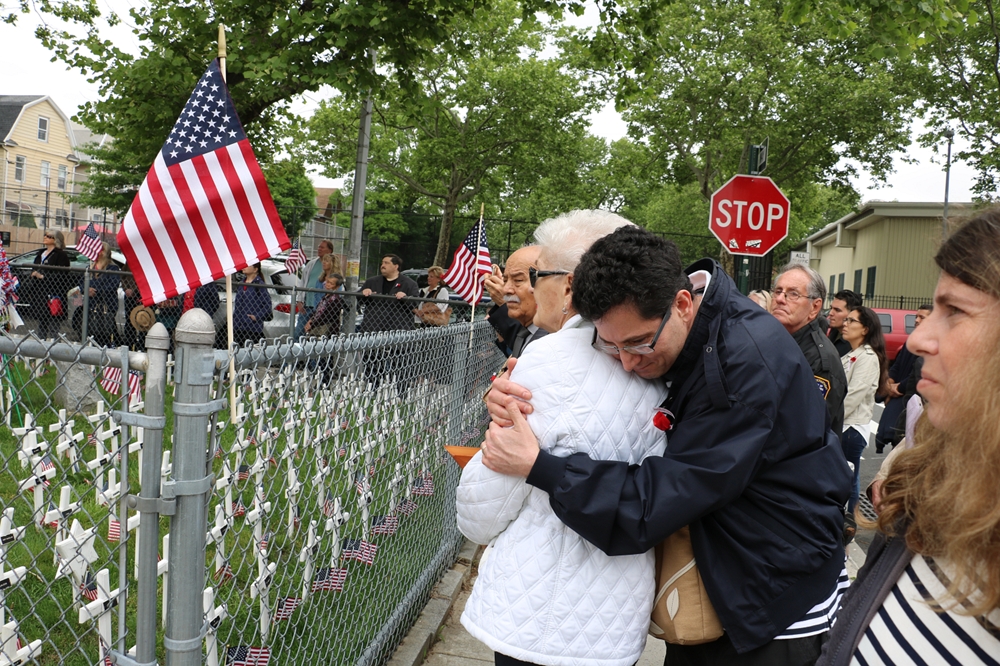


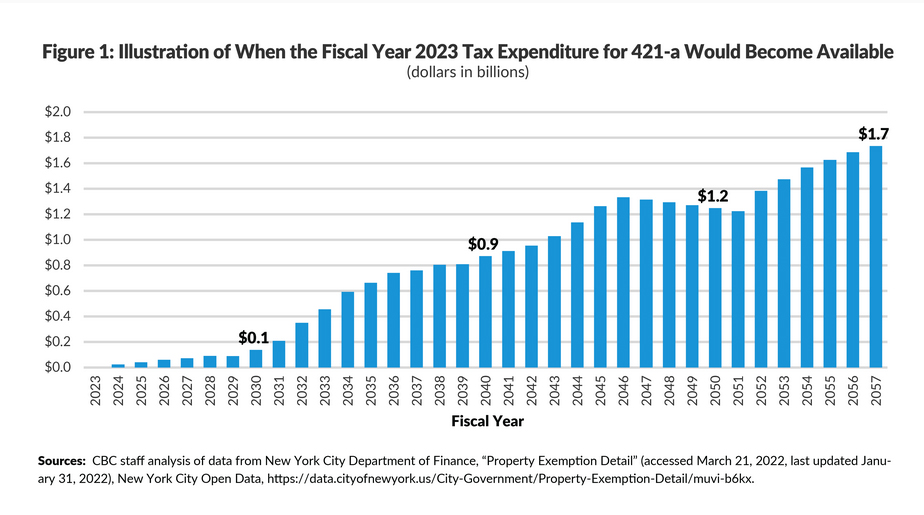
 First, most development projects receiving 421-a benefits, particularly under the current version of the program, would not have been built without the incentive. Furthermore, CBC’s analysis shows that the foregone revenue will decrease by less than $100 million per year through fiscal year 2029, and it will take until fiscal year 2043 for $1 billion of the currently foregone revenue to be returned to the tax roll.
First, most development projects receiving 421-a benefits, particularly under the current version of the program, would not have been built without the incentive. Furthermore, CBC’s analysis shows that the foregone revenue will decrease by less than $100 million per year through fiscal year 2029, and it will take until fiscal year 2043 for $1 billion of the currently foregone revenue to be returned to the tax roll. To improve affordability and catch up to past population and job growth, New York City needs to produce more housing of every kind, including both affordable and market-rate rental units. A successor to 421-a is a key component of a broader package of policies and programs needed to boost housing production, which should also include reducing construction and operating costs, increasing as-of-right zoning capacity, and reforming the property tax. Allowing 421-a to expire without a successor will result in less rental housing construction, significantly less affordable housing development (both overall and especially in high opportunity areas), and in the long run, less property tax revenue for the City.
To improve affordability and catch up to past population and job growth, New York City needs to produce more housing of every kind, including both affordable and market-rate rental units. A successor to 421-a is a key component of a broader package of policies and programs needed to boost housing production, which should also include reducing construction and operating costs, increasing as-of-right zoning capacity, and reforming the property tax. Allowing 421-a to expire without a successor will result in less rental housing construction, significantly less affordable housing development (both overall and especially in high opportunity areas), and in the long run, less property tax revenue for the City.